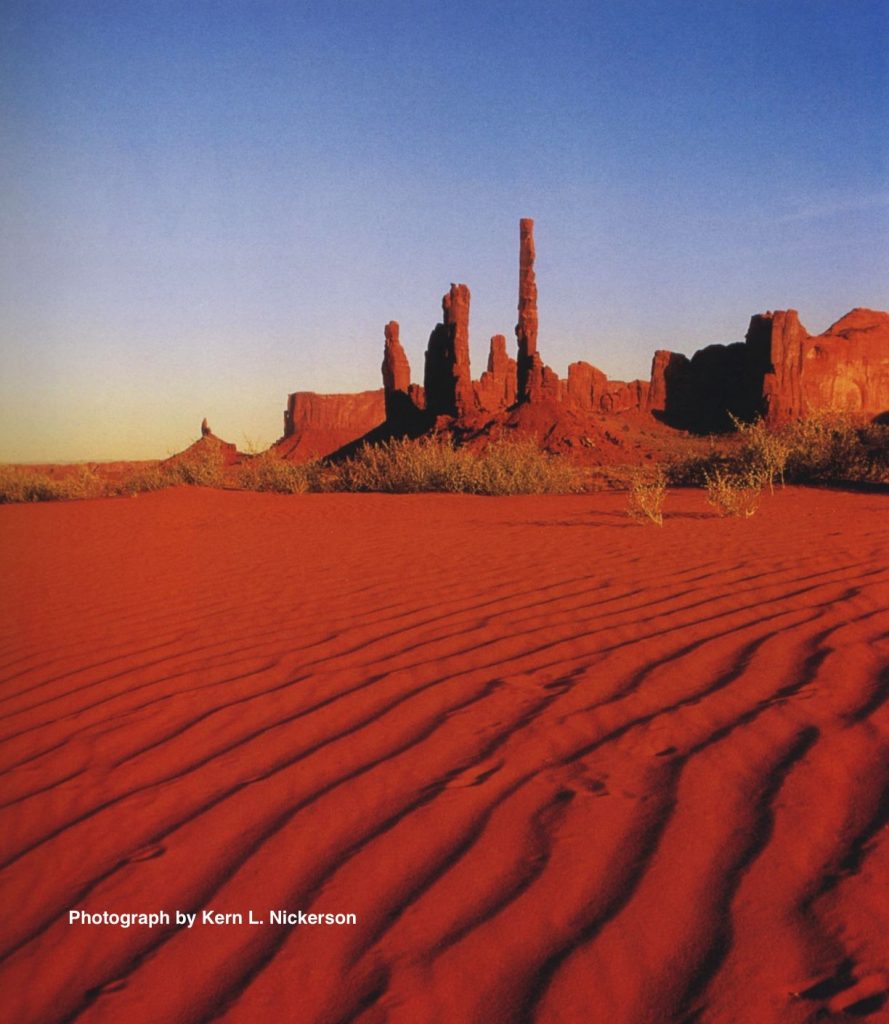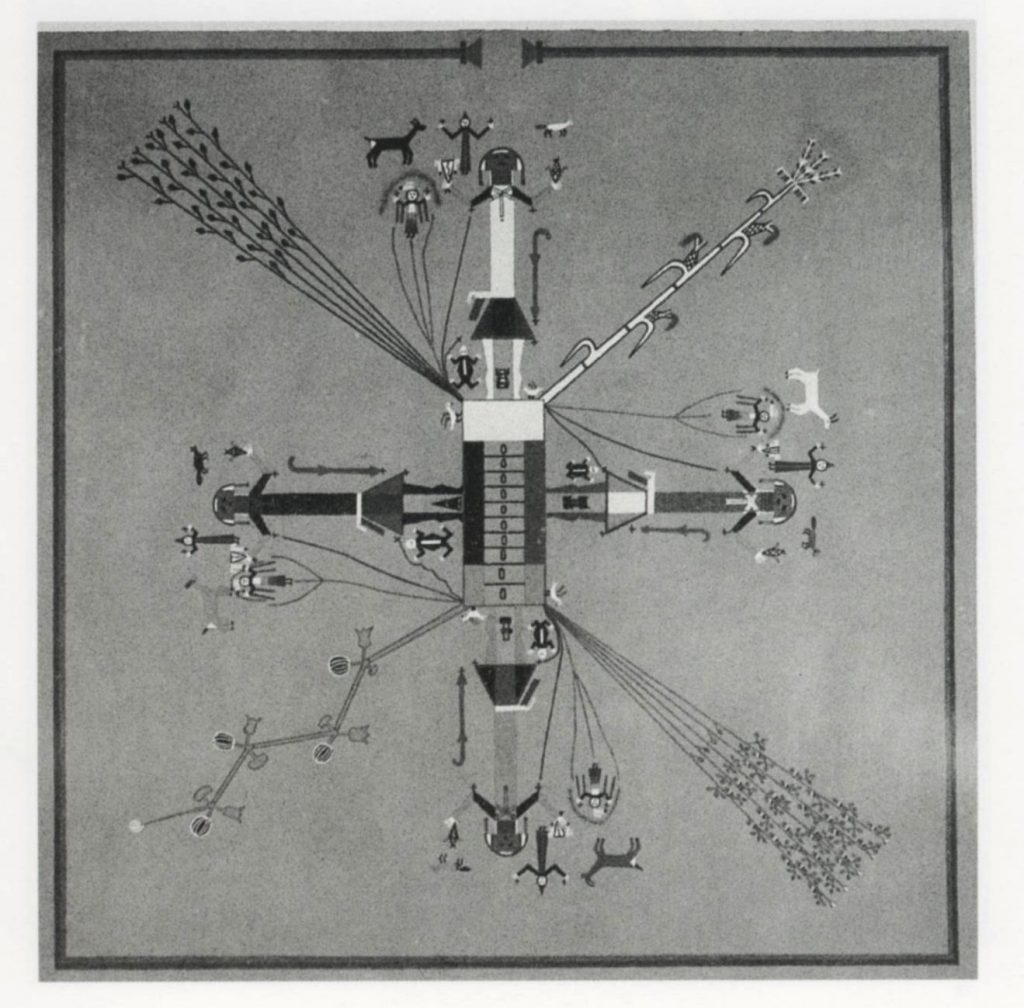A Medicine Person is a Janitor With a Broom Who Lives in a Big Room
Visionary Report and a Prayer
A few days ago, Brad dreamed we were at a modern administration building for the Navajo Nation, the territory that lies in northeastern Arizona, northwestern New Mexico, and southeastern Utah:
Hillary and I were sitting in front of a desk being interviewed by a middle age woman who asked us what we wanted to do in their community. Unlike in the past when a dream led me to find the medicine woman, Walking Thunder, an official process and bureaucratic structure had now been set up to screen out anyone they did not want to access their traditional ways.[1] It felt strange because it seemed we were both in the past and in the present with no idea what we were planning for the future. As they asked what we wanted to do, I wondered if they knew I had previously written a book about Diné spirituality with Walking Thunder. I did not mention it, nor did we speak clearly about our plans because we did not actually know why we were there. I mumbled something vague about “wanting to help the people, following whatever the people defined as ‘help.’”

However, it seemed they assumed we were there to engage with traditional spiritual wisdom. Another middle-aged woman was sitting to my right, a little bit behind me. I had not noticed her there before. She started telling us that she knew the medicines and wanted to share her knowledge. It was unusual that a traditional medicine person would directly offer this to anyone. We showed our respect but at the same time, we did not convey any curiosity or hunger to hear more.
Then to our left a young man walked over to the administrator’s desk and blurted out that he was “initiated as a medicine man.” His unseemly bravado tipped us off that he was just checking to see how we’d react. We suspected that they were testing us—seeing if we were there to harvest their spirituality in the way they were accustomed to experiencing from outside scholars and spiritual seekers. Again, we were respectful but showed no real interest in what he was saying. This was easy because his words did not touch our hearts.
A Janitor With a Broom
I then looked up at the ceiling overhead. It was an extraordinary contemporary work of multimedia art, inspired by the aesthetics indigenous to New Mexico. It consisted of at least three layers of different materials. I leaned over and mentioned to Hillary, “New Mexico always has wonderful art.” We were both moved by the beauty above us. In that moment, the administrator sitting behind the desk asked, “Are you medicine people?” I immediately replied, “I am a janitor with a broom who makes room for the spirit to come.”
At that moment the ceiling art came alive and its various materials started to expand, turn, and change form. It gave me such a startle that I woke up from the dream trembling. Yet I was unsure I was fully awake because the vision continued. The ceiling became a giant tipi in the sky. Then it transformed again into a giant Diné hogan in the stars. I remembered that these were actual visions experienced by indigenous medicine people.[2]
I also knew the spirit tipi and hogan were two changing forms of what we call “the big room.” They hold all the forms of the diverse religious traditions.
I believed I had entered their visions and spoke back to what I beheld, “These are not my visions; they belong to others. I cannot claim to own them.” I started spontaneously singing my favorite children’s hymn to feel guided by higher administration. Just then the heavenly visionary rooms seen above dropped to the ground like pieces of a jigsaw puzzle. They appeared as symbols I have formerly observed in Diné sand paintings that were used in a holy way. Overlapping like images in a kaleidoscope, they kept turning and rearranging on the floor as if a spontaneous sand painting was being made by invisible hands.

Like Filling an Empty Glass
Suddenly a wind came into the room and brought animated life to the symbol for the Yei or spirit Holy People from above. In front of my eyes it changed to look like a broom, then a dancer, and after that, a holy two-winged spirit. The morphing Yei was both sweeping the floor and building a sacred painting at the same time.
When the image on the ground was finally made whole, a whirling force more felt than seen poured in from above. I was shown the important plants, the medicinal preparations, the symbolically drawn evocations, and the wide range of mystical interventions that come from the original source of heavenly luminosity. It was like a high-speed film version of going to spiritual medical school. In this numinous download, I felt nothing other than being an empty vessel filled as if it was a plain and natural event, like filling a glass with drinking water.
I woke up praying for God to lead us. The last few nights I had gone to sleep praying, “Throw us anywhere, Lord. Throw us anywhere.” Each night we were thrown somewhere new. I now felt encouraged to share this prayer with the current Guild members and encourage them to add it to their bedtime entry to sleep.
I also more deeply understood that there are no holy healers, shamans, mystics, singers, or medicine people as people typically conceive and name them. There are only janitorial sweepers who clear enough space as they erase the past and future, providing a spot that is in the middle of it all. There the prayers go up and the medicine comes down. “Throw us anywhere, Lord.” Say or sing that prayer daily while you sweep the room, weed the garden, and empty the vessel of you.
-The Keeneys, March 13, 2020
[1] The Diné have always been protective of sharing their traditional ways with outsiders, however when Brad visited previously it was the medicine elders themselves who granted him access, not a bureaucratic agency. For more info on Walking Thunder see Bradford Keeney, ed. 2001. Walking Thunder: Diné Medicine Woman, Philadelphia: Ringing Rocks Foundation and Leete’s Island Press.
[2] Black Elk visioned a mystical tipi with a flaming rainbow door. See John Neihardt’s book, Black Elk Speaks. Walking Thunder’s big vision was of a hogan that contained all the religions of the world. See Brad’s book, Walking Thunder. Both visions brought the lesson that the mystical tipi and hogan are vast enough to contain all religious ways.
